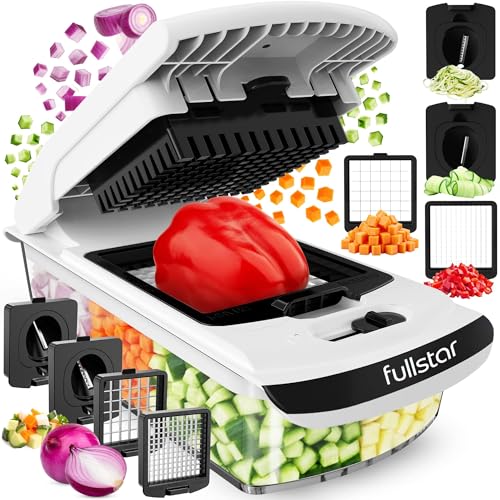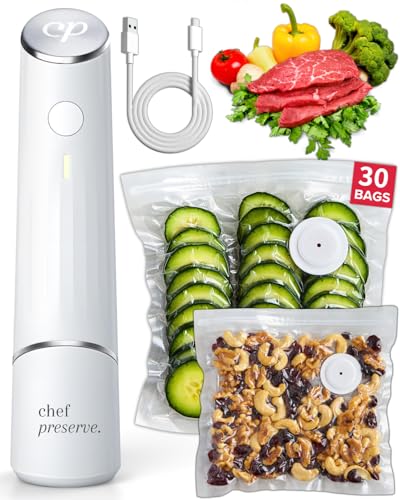Origins of Easter Biscuits
Although the exact origins of Easter biscuits remain somewhat shrouded in mystery, they are believed to have evolved from traditional recipes in Europe, particularly in England.
These delightful confections are deeply entwined with Easter traditions, symbolizing renewal and celebration during the spring season. Biscuit history suggests that the earliest iterations were simple and humble, often made with flour, sugar, and butter, reflecting the available ingredients of the time.
Over the centuries, flavors such as lemon and nutmeg were introduced, adding a fragrant twist to the dough. These biscuits were often decorated with religious motifs, serving both as festive treats and as reminders of the holiday’s significance.
Today, Easter biscuits stand as a cherished symbol of culinary heritage, celebrating the joy of the season.
- The Original Pro Chopper - Our superstar veggie slicer has been creating waves on TikTok! Simple to use,...
- Easy Meal Prep with Rust-Resistant Blades - Our vegetable chopper is perfect for anyone who wants to eat...
- 5-Star Design - The soft-grip TPU handle ensures controlled chopping, while the non-skid rubber base...
Families Celebrating Easter
Easter brings families together in a vibrant celebration filled with joy and tradition. As the season of renewal unfolds, families engage in various Easter traditions that have been passed down through generations.
Colorfully decorated eggs and festive attire mark the holiday, while children eagerly participate in egg hunts, embracing the season’s excitement.
Family gatherings become a focal point, where loved ones come together to share laughter and create lasting memories.
Holiday recipes, often featuring cherished dishes, fill the air with tantalizing aromas, enhancing the spirit of the day.
These seasonal celebrations, rich with symbolism and warmth, foster connection and togetherness, reminding families of the importance of love and unity as they celebrate Easter’s meaning.
- Makes Everything Simple : Just forget your bagged cheese! Only turn the handle for several times and get...
- Premium Material : All parts of the rotary cheese grater are made of food grade ABS material, no BPA. The...
- Three Option Grater : The parmesan cheese grater finishes food preparation with slicing, shredding and...
Essential Ingredients

Baking delightful Easter biscuits requires a careful selection of essential ingredients that contribute to their flavor and texture.
Central to the biscuit’s structure is all-purpose flour, with a recommended amount of 3 1/2 to 4 cups. This flour base allows for various biscuit variations, providing the perfect canvas for creativity.
To infuse the biscuits with zest, fresh lemon and aromatic nutmeg serve as excellent flavor enhancements, enticing the senses with their vibrant profiles.
Sugar adds sweetness while a pinch of salt balances the flavors, ensuring a harmonious taste.
Additionally, butter, whether softened or melted, enriches the overall mouthfeel, contributing to a tender crumb.
Together, these ingredients create delightful Easter biscuits that celebrate the spirit of the season.
- 💰 REDUCE WASTE AND SAVE MONEY: Chef Preserve keeps FOOD FRESH 5 TIMES LONGER than non-vacuum storage...
- ✅ POWERFUL, QUICK & EASY TO USE: Simply press the button to start. The device vacuum seals a bag in 5...
- ♻️ REUSABLE & RESEALABLE BAGS: Chef Preserve comes with dishwasher, freezer, refrigerator, and...
Cooking Steps
With all the ingredients gathered, the process of creating delightful Easter biscuits begins. The cook combines the all-purpose flour with fragrant nutmeg—invoking time-honored Easter traditions—as they blend in the zesty lemon zest for a refreshing kick.
Each ingredient is incorporated carefully, creating a smooth dough that can be molded into various biscuit shapes, reflecting the creativity of biscuit variations cherished during the festive season. After achieving the perfect consistency, the dough is lightly rolled and cut into desired forms, allowing for personalization in each piece.
To elevate the festive spirit, the biscuits can be adorned with colorful icing or sprinkled with sugar, making them not just a treat but a visual delight as well, adding joy to any Easter celebration.
- Generous Capacity: 7-quart slow cooker that comfortably serves 9+ people or fits a 7-pound roast
- Cooking Flexibility: High or low slow cooking settings, with convenient warm function for ideal serving...
- Convenient: Set it and forget it feature enables you to cook while at work or performing daily tasks
1. Preheat Oven to 350°F

An essential step in achieving biscuit perfection is preheating the oven to a precise temperature of 350°F. This temperature ensures that the biscuits rise beautifully, developing a golden crust while maintaining a soft, fluffy interior.
As the oven heats, the air circulates, creating an ideal environment for even baking. The right oven temperature is crucial; if it’s too low, the biscuits may spread too much, while too high could lead to burnt edges.
Once the oven reaches 350°F, bakers should be mindful of the baking time, which typically ranges from 12 to 15 minutes, depending on biscuit size. Proper preheating not only optimizes texture but also enhances the delightful flavors of lemon and nutmeg in each bite.
- 100% Leak-proof: Guaranteed no-spill seal and secure latches
- Crystal-clear Tritan Built: Stain-resistant and odor-resistant material for a clear view of contents
- Lightweight & Sturdy: Easy to carry, yet durable for everyday use
2. Mix Dry Ingredients Thoroughly

Combining the dry ingredients is a crucial step in biscuit preparation that sets the foundation for flavor and texture. Selecting the appropriate flour types, such as all-purpose flour, ensures the right consistency in the biscuits.
Utilizing effective mixing techniques, such as sifting the flour, helps to aerate the mixture, promoting a lighter texture. Incorporating the baking powder and salt uniformly is essential for even rise and flavor distribution.
For more rigorous mixing, a whisk can be employed to blend the ingredients seamlessly, while avoiding over-mixing which can develop gluten and lead to tougher biscuits. This thoughtful attention to detail in the dry ingredient mix will significantly enhance the overall result, making for delightful, tender Easter biscuits.
- 𝗘𝗳𝗳𝗼𝗿𝘁𝗹𝗲𝘀𝘀 𝗪𝗲𝗶𝗴𝗵𝗶𝗻𝗴: Supports 5 units...
- 𝗣𝗿𝗲𝗰𝗶𝘀𝗲 𝗥𝗲𝘀𝘂𝗹𝘁𝘀: Accurately weighs up to 11 lb/5 kg with 1 g...
- 𝗦𝗶𝗺𝗽𝗹𝗲 & 𝗖𝗼𝗺𝗽𝗮𝗰𝘁: The small and sleek scale is a perfect fit for...
3. Add Lemon and Nutmeg

The incorporation of lemon and nutmeg adds a delightful layer of flavor to the Easter biscuits, elevating them beyond the standard recipe. Grating fresh lemon zest into the mixture infuses the dough with a bright, citrusy essence, awakening the senses and complementing the sweetness of the biscuits.
The zest’s tangy notes marry beautifully with the warm, nutty depth of ground nutmeg, creating a harmonious balance that enchants every bite. As the biscuits bake, the nutmeg aroma wafts through the kitchen, inviting everyone to gather and indulge.
Together, these ingredients do more than enhance taste; they evoke a sense of nostalgia and celebration, making the biscuits not just a treat but a cherished part of Easter traditions.
- Instant Read Food Thermometer | Our instant read thermometer features a temperature probe and advanced,...
- Multi-Use | From bbq thermometer to baking thermometer, our digital food thermometer for cooking is...
- Easy-Read Digital Thermometer For Cooking | Large instant thermometer dial with bright blue backlight...
4. Chill Dough Before Baking

Chilling the dough before baking serves a crucial purpose in creating perfectly textured Easter biscuits. This essential step enhances the dough consistency, allowing the flavors of lemon and nutmeg to meld beautifully while firming up the mixture.
As the dough chills, the fat within solidifies, which helps maintain its shape during baking. The chilling benefits are twofold: it prevents the biscuits from spreading too much, resulting in a thicker, chewier texture, and it strengthens the overall structure, ensuring each bite is delightful.
A chilled dough not only contributes to an appealing presentation but also affects the final taste and texture, yielding a wonderfully satisfying treat that captures the spirit of Easter. Patience in this step ultimately leads to biscuit perfection.
- Versatile 54-Piece Collection: Elevate your kitchen with the Home Hero 54-Piece Kitchen Utensil Set, a...
- Durable and Long-Lasting: Crafted from premium stainless steel, these kitchen utensils are designed to...
- Perfect Holiday Gift: Delight your loved ones with this kitchen utensils gift set this festive season....
5. Roll Dough Into Balls

Once the dough has chilled to the perfect consistency, rolling it into balls transforms the mixture into individual biscuit portions ready for baking.
This dough shaping technique requires taking small portions of dough and effortlessly rolling them between the palms to achieve smooth, uniform balls. Each ball should ideally be about one inch in diameter, ensuring even baking and an appealing presentation.
As the baker progresses, they can consider various cookie decoration ideas—perhaps pressing a fork into the tops for texture or adding decorative sprinkles before baking.
This step not only prepares the biscuits for the oven but also invites creativity, allowing each ball to become a canvas for festive embellishments that will delight everyone during the Easter celebration.
- 24-ounce insulated stainless-steel water bottle with a FreeSip spout and push-button lid with lock
- Patented FreeSip spout designed for either sipping upright through the built-in straw or tilting back to...
- Protective push-to-open lid keeps spout clean; convenient carry loop doubles as a lock
6. Bake for 10 to 12 Minutes

As the oven preheats, the excitement builds for what is to come, for baking the biscuits is a crucial step in bringing them to life.
Once the dough balls are arranged on a baking sheet, it’s time for the magic of baking techniques to unfold. Setting the timer for 10 to 12 minutes allows for a careful watch on the biscuits as they transform.
The heat envelops them, causing the nutmeg and lemon to mingle, creating a delightful aroma that fills the kitchen. Achieving the perfect golden-brown color is key to ensuring a pleasing texture and flavor balance.
As they bake, the anticipation heightens, leaving one eager to taste the delicious results that await.
7. Serving Suggestions With Tea

After the biscuits have emerged from the oven, golden and fragrant, the next step invites an afternoon of indulgence.
These delightful Easter biscuits are best enjoyed alongside a carefully selected tea type. A classic Earl Grey, with its notes of bergamot, pairs beautifully, enhancing the nutmeg’s warmth. Alternatively, a chamomile tea offers a soothing harmony, accentuating the lemon’s zest.
For those seeking a more vibrant experience, a fresh mint tea can provide a refreshing contrast. Biscuit pairings play a crucial role in elevating this tea-time experience; the crispy texture and sweet aroma of the biscuits complement the infused flavors of the tea, bringing forth a charming culinary duet that appeals to all the senses.
Serving and Pairing Suggestions

Although Easter biscuits shine on their own, the experience is elevated when they are thoughtfully served and paired.
These delightful treats offer a perfect complement to various elements during Easter gatherings, enhancing the festive atmosphere.
Consider the following serving and pairing suggestions:
- Herbal Tea: The subtle flavors of chamomile or mint enhance the lemon zest.
- Earl Grey: The bergamot notes pair beautifully with the nutmeg, creating a harmonious blend.
- Chocolate Sauce: Drizzling a bit of rich chocolate adds an indulgent touch.
- Fresh Berries: Serving biscuits alongside strawberries or raspberries introduces a fresh, tangy counterpoint.
With these combinations, Easter biscuits transform into a centerpiece of culinary celebration, delighting all who partake.
Tips and Variations

To elevate the traditional Easter biscuits, bakers can explore a variety of tips and variations that enhance flavor and presentation.
These suggestions allow for personal creativity and can delight any gathering:
- Infuse flavors: Experiment with alternative zest, such as orange or lime, to give unique cookie variations.
- Add nuts: Incorporate chopped almonds or walnuts for added texture and a nutty taste.
- Creative toppings: Enhance the biscuits with a drizzle of icing, colorful sprinkles, or edible flowers for an eye-catching finish.
- Shape variations: Use different cookie cutters or mold the dough into fun shapes for festive appeal.
In doing so, bakers can turn simple biscuits into memorable treats, showcasing their culinary flair.
Kitchen Tools
Baking the perfect Easter biscuits requires a well-equipped kitchen, where essential tools become the unsung heroes of the process. The right kitchen gadgets enhance efficiency and ensure precision in measurement, making baking enjoyable and successful. Below is a curated list of indispensable baking essentials that make creating these delightful treats a breeze.
| Kitchen Gadget | Purpose |
|---|---|
| Mixing Bowl | Combines dry and wet ingredients efficiently |
| Measuring Cups | Ensures accurate ingredient proportions |
| Rolling Pin | Achieves an even biscuit thickness |
| Cookie Cutters | Shapes biscuits into festive designs |
| Baking Sheets | Provides a non-stick surface for even baking |
With these tools in hand, bakers can focus on creating delicious lemon and nutmeg-infused Easter biscuits.
Essential Equipment
Creating delightful Easter biscuits necessitates the right essential equipment to transform ingredients into scrumptious treats. Ensuring the baking process goes smoothly requires specific tools designed for efficiency and quality.
- Mixing bowls: Essential for combining ingredients thoroughly.
- Baking sheets: Necessary for evenly baking the biscuits, allowing for optimal rise and browning.
- Cooling racks: Vital for letting the biscuits cool evenly, preventing sogginess and preserving texture.
- Measuring cups and spoons: Important for accurately measuring ingredients to achieve the perfect flavor balance.
Having these essential tools on hand will streamline the biscuit-making process, leading to delicious outcomes that are sure to impress family and friends during the Easter festivities.
Nutritional Information (Estimated, per serving)
While Easter biscuits may be a delightful treat, it is essential to consider their nutritional information to ensure they fit into a balanced diet. These biscuits offer several nutritional benefits, but portion control is crucial.
| Nutrient | Amount per Serving |
|---|---|
| Calories | 150 |
| Total Fat | 6g |
| Saturated Fat | 3g |
| Carbohydrates | 23g |
| Protein | 2g |
For those seeking healthier options, ingredient substitutes can enhance the nutritional profile. Whole wheat flour can replace all-purpose flour, reducing refined carbohydrates while adding fiber. Additionally, substituting honey for sugar introduces natural sweetness and antioxidants. Ultimately, understanding the nutritional aspects helps create a more wholesome Easter experience.
Related Lemon-Flavored Treats

Lemon-flavored treats bring a refreshing twist to traditional festivities, complementing sweet options like Easter biscuits with a zesty brightness.
These delightful lemon desserts help enhance the ambiance of springtime gatherings, showcasing the versatile charm of citrus flavors.
Some enticing lemon treats to explore include:
- Lemon Bars: Tangy and sweet, these bars offer a buttery crust and a luscious filling.
- Lemon Sorbet: A light and icy treat, it cleanses the palate with every bite.
- Lemon Cheesecake: Creamy and decadent, it pairs the tanginess of lemon with velvety cream cheese.
- Lemon Poppy Seed Muffins: Perfect for breakfast or snacking, they deliver a burst of flavor in every crumb.
These options celebrate the vibrant taste of lemons, making every occasion a little more special.
Troubleshooting
When embarking on the delightful journey of baking Easter biscuits, various challenges may arise, necessitating a troubleshooting guide to ensure a successful outcome.
Biscuit consistency is crucial; if the dough is too sticky, adding additional flour in small increments can help achieve the desired texture. Conversely, if the dough is overly dry, a touch of milk can restore moisture.
Flavor balance is another critical aspect; overly strong nutmeg can overshadow the lemon essence. To rectify this, one might simply reduce the amount of nutmeg or enhance the lemon zest.
Additionally, ensuring that all ingredients are at room temperature can aid in a more harmonious blend of flavors.
Conclusion
As the delightful aroma of freshly baked Easter biscuits fills the kitchen, bakers can reflect on the joy and satisfaction that come from creating these treats.
Rooted in biscuit history, these morsels offer a delicious connection to tradition, particularly during festive celebrations.
Every recipe invites room for flavor variations, whether it be the addition of spices or fruity ingredients, allowing for personal expressions in this age-old craft.
The subtle notes of lemon and nutmeg enhance the sweetness, making them perfect companions for any holiday gathering.
Ultimately, the art of baking Easter biscuits not only delights the palate but also serves as a cherished experience, fostering connections and memories that can be savored long after the last crumb is gone.
















